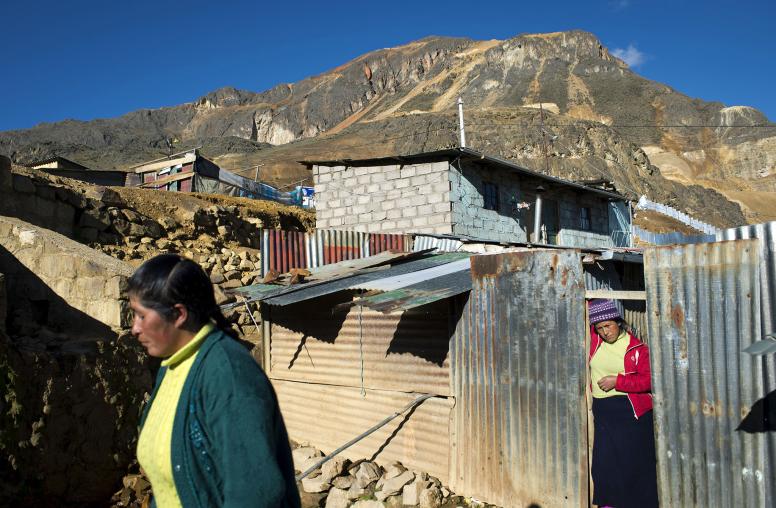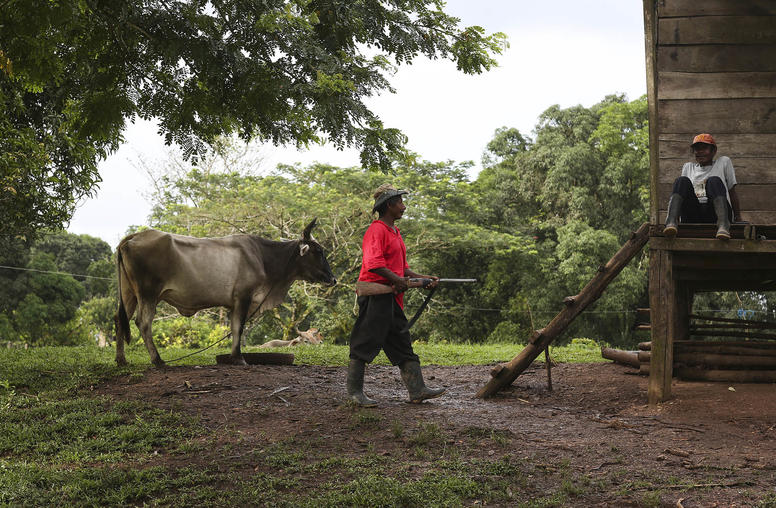Commission of Inquiry: Peru 86
Truth Commissions Digital Collection
Commission of Inquiry: Commission of Inquiry to Investigate the Massacre of Prisoners
Duration: 1986 - 1988
Charter: Not available
Commissioners: 13
Report: Public minority report
Commission of Inquiry: Commission of Inquiry to Investigate the Massacre of Prisoners (Comisión investigadora de las masacres en los Penales)
Dates of Operation: August 1986 – 1988 (2 years)
Background: In 1980, the Shining Path, a Maoist opposition group, began an uprising against the Peruvian military dictatorship to protest pervasive social and economic inequalities. Guerrilla warfare was waged between the Shining Path's militia and the Peruvian military. On June 18-19, 1986, inmates in three prisons rioted and took hostages, demanding the release of political prisoners linked to the Shining Path. In response, more than 250 political prisoners were summarily executed in the prisons of San Juan de Lurigancho (province of Lima), El Frontón and the women’s prison of Santa Barbara (both in the province of Callao).
The scandal forced the Peruvian Congress to appoint an ad-hoc commission of inquiry in August 1986. The Commission took more than a year to start its work and ultimately became deadlocked between two irreconcilable blocks: one that favored an independent investigation and one loyal to the regime, which wanted to avoid attributing responsibility for the abuses. This commission of inquiry preceded the Truth and Reconciliation Commission (established in 2000), which included the events of June 1986 in its investigations.
Charter: The Commission of Inquiry to Investigate the Massacre of Prisoners was created by the Peruvian Congress in August 1986 as an ad-hoc commission of inquiry.
Mandate: The ad hoc commission was instructed to investigate the killings of prisoners on June 18 and 19, 1986 in the three prisons where killing occurred.
Commissioners and Structure: The Commission of Inquiry to Investigate the Massacre of Prisoners was composed of thirteen Peruvian parliamentarians: twelve men and one woman. It was presided over by lawyer and political scientist Rolando Ames Cobian.
Report: The commission issued a majority and a minority report two years after its establishment. From the beginning, the commissioners split into two blocs and in the end presented two separate reports. Those loyal to the government presented the "Majority Report", which was later accepted by the President. The others, under the leadership of chair Rolando Ames published a "Minority Report". The minority report of 380 pages was published in Spanish. See the publishing information in the sources.
Findings:
Majority Report Conclusions
- The Majority Report denied the responsibility of the President and the Council of Ministers, but the actual text is not available.
Minority Report Conclusions
- The Commission's Minority Report concluded that the President of the Republic, Alan García Perez as well as the Council of Ministers were directly responsible for the death of 246 prisoners.
- The Peruvian authorities tried to cover up conditions in the prisons as well as the events of June 1986 and obstructed the work of judicial authorities. Official communication about the incidents was considered to have been inaccurate or even deliberately erroneous.
- The government failed to prevent the Shining Path from infiltrating the prisons.
- The Ministry of Justice and the National Penitentiary Institute (Instituto Nacional Penitenciario – INPE) did not comply with the Peruvian Penal Code in respect to the classification and registration of prisoners.
Recommendations:
- The Minority Report recommended wide ranging democratization measures such as a new conception of national defense based on the respect of national and international norms for the protection of human rights.
- The Minority Report Commissioners also recommended reforms such as the improvement of prison infrastructure and corrections policies. They also proposed that the Minister of Justice, Luis González Posada and the head of the National Penitentiary Institute should be held accountable.
Subsequent Developments:
Reforms
- The ad hoc commission’s investigations had few consequences. The divided Commission was accused of having impeded the clarification of the facts. Luis Giampietri, one of the naval officers commanding the repression of the uprising at one of the prisons, later became Alan García's vice president.
Prosecutions
- After what many viewed as a flawed process, in 1989, minimal sentences were given to low-ranking agents involved in the massacre at the Lurigancho prison.
- A number of cases have been reopened or started after the Inter-American Court of Human Rights in August 2000 decided that the State of Peru was responsible for the killings in the prisons and that it had to investigate the facts and sanctions those responsible.
Reparations
- The Commissions of Inquiry did not recommend reparations. The later Truth and Reconciliation Commission established in 2000 took up the issue and suggested a reparations program.
Sources:
Asociación para el Desarrollo Humano "Runamasinchiqpaq". "Masacre En El Frontón 1986." Available at http://correosemanal.blogspot.com/2008/06/per-masacre-en-el-frontn-1986.html (accessed September 20, 2008).
Asociación Pro Derechos Humanos – APRODEH. “Ayuda Memoria: Casos: La Matanza en "El Frontón (2005).”
Cuya, Esteban. "Las Comisiones De La Verdad En América Latina." Ko'Aga Roñe'Eta iii, (1996). Available at http://www.derechos.org/koaga/iii/1/cuya.html (accessed July 2, 2008).
Peru. Congreso. Comisión Investigadora sobre los Sucesos de los Penales., Rolando Ames, and Peru. Congreso. Informe Al Congreso Sobre Los Sucesos De Los Penales. Lima, Perú: 1988.
1986 State 205132 National Security Archive. Garcia and the Military: Plea for International Support (Unclassified). Available at http://www.gwu.edu/~nsarchiv/NSAEBB/NSAEBB64/peru10.pdf (accessed September 20, 2008).


